Tamil Nadu with South Kerala
12 Nights / 13 Days
Day 1: Chennai
Arrive in Chennai. After you have cleared immigration and customs formalities, you will be met outside the arrival hall by our representative, who will be holding a sign with your name. They will escort you to your vehicle and assist with transfer and check-in formalities at your hotel. (check-in time 12 afternoon).
Chennai is known as the ‘Gateway to South India’. It is located on the South East coast of India, in the northeastern corner of Tamil Nadu. The flat plains on which it is located are known as the Eastern Coastal Plains. The city is splashed by two rivers. One is the Cooum or Koovam River, which flows through the center. The second is the Adyar River which flows towards the south. Apart from this, there is the Buckingham Canal; running parallel to the coast and linking the two rivers. The Otteri Nullah, an east-west stream, flows through north Chennai and meets the Buckingham Canal at Basin Bridge. There are many lakes located on the western fringes of the city. Red Hills, Sholavaram and Chembarambakkam Lakes supply Chennai with drinkable water.
Afternoon: you will be met by your guide at the hotel to start the city tour of Chennai. First, a visit to Fort St. George (closed on Fridays), built in 1640 A.D by the British East India Company, under the direct supervision of Francis Day and Andrew Cogon. The fort houses St. Mary’s Church (closed on Sundays). The flag–staff at Fort St. George is the tallest in India. The Government Museum of Chennai (closed on Fridays) is one of the most popular sightseeing spots in the city. It is deemed to be one of the oldest museums of India, as its inception dates back to the Colonial rule.
Also visit Kapaleshawara Temple (closed on college holidays) – a fine example of Dravidian style architecture dedicated to Lord Shiva. The notable feature of this structure is the 37-meter tall gopuram – the pyramid-shaped temple-top. The Parthasarathy temple in Chennai originated in the 8th century: it was generally built by the Pallavas and later reformed by the Vijayanagar Kings during 11th century.
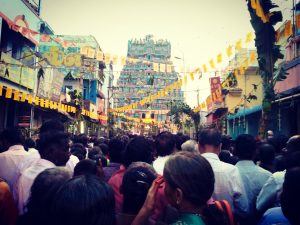
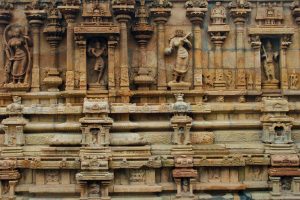
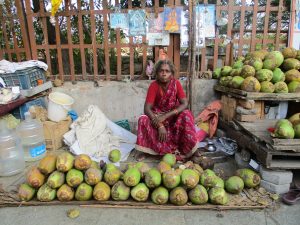
Day 2: Chennai – Mahabalipuram
After breakfast, drive to Mahabalipuram, visiting Dakshinchitra en-route (remains closed on Tuesdays & Diwali).
DakshinaChitra is an exciting cross-cultural living-history museum of art, architecture, lifestyles, crafts and performing arts of South India. One can explore the 17 heritage houses, amble along recreated streetscapes, explore contextual exhibitions, interact with typical village artisans and witness folk performances set in an authentic ambience. DakshinaChitra literally means – “A picture of the south”.
Continue driving to Mahabalipuram city which is also known as Mamallapuram and is located in the Kancheepuram district of Tamil Nadu. The city was once the capital of Pallava kings and was named after the Pallava King, Mamalla. It is flanked by a number of historical monuments of yore. Situated at a distance of 60 km from Chennai, the rock-cut temples and caves situated here originated between 7th and 9th century and are the finest in the world.
Mahabalipuram occupies a stunning position on a rocky outcrop between the beach and a lagoon. Built by the Pallava rulers in the seventh century the complex comprises of 14 Cave Temples, nine monolithic “Rathas”, three stone temples and two relief sculptured rock panels. These two rock-panels give a graphic description of Arjuna’s penance when he prayed for the powers of Shiva and forms the largest bas-relief in the world. Particularly of interest is the Shore Temple built on the water’s edge with an east-facing altar designed to catch the rising sun – this has now been declared a World Heritage site
Day 3: Mahabalipuram – Kancheepuram – Mahabalipuram
Visit Shore Temple: perched on a rocky outcrop, it presides over the shoreline, serving, as Percy Brown puts it, as ‘a landmark by day and a beacon by night’. Designed to catch the first rays of the rising sun and to illuminate the waters after dark, the temple ended up with an unusual lay-out. As the main shrine faces the sea on the east, the gateway, the fore count and the assembly hall of the Shore Temple all lie behind the sanctum. Unusual, too, is the fact that the temple has shrine to both Shiva and Vishnu. The main sanctum and one of the two lesser ones on the west are dedicated to Shiva. The enclosing wall has a series of Nandi bulls on it. Interconnected cisterns around the temple meant that the sea could be let in to transform the temple into a water shrine. But, in recent times, a stone wall as been added to protect the shrine from the rising seas and further erosion.
Afternoon: you will be driven to Kancheepuram (1.5 hours drive), which is one of the seven holy cities in the country, and a visit is believed to bestow salvation. Kancheepuram once had over a thousand temples. Today, there are more than a hundred extant, and all are worth a visit. This is an important temple town and attracts millions of Hindu Pilgrims every year. The temples here are excellent examples of Dravidian architecture.
Later, visit Kancheepuram Saree weaving factory where you can witness these beautiful sarees being made.
After the tour is over, drive back to hotel
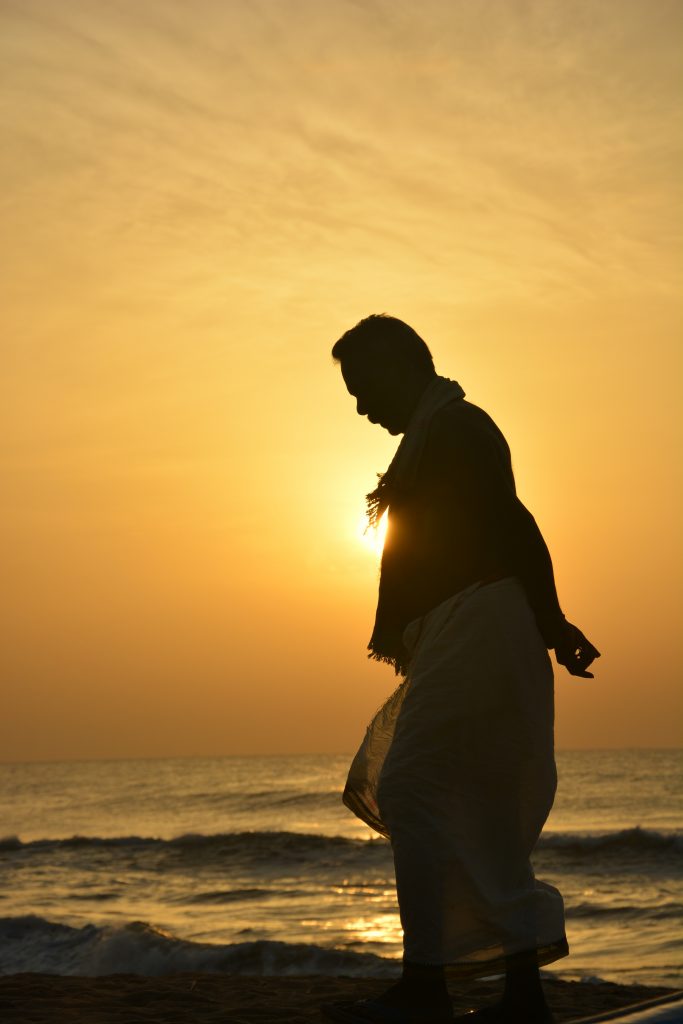
Day 4: Mahabalipuram – Pondicherry
Morning: breakfast, you will be assisted with your check-out & onward drive to Pondicherry (3 Hrs drive.)
On arrival in Pondicherry you will be met and assisted with check-in at your hotel.
Pondicherry traces its origin to Saint Agasthya, the revered sage of the south. Situated on the Coromandel coast, about 160 km south of Chennai, lies the Union Territory of Pondicherry. The French ruled this territory for 300 years, and today, it stands as a living monument of French culture in India. It is bound on the east by the Bay of Bengal and on the other three sides by the South Arcot District of Tamil Nadu.
Sightseeing of the city includes a visit to Auroville – Ashram and Matrimandir. Auroville was founded as a project of the Sri Aurobindo Society on Wednesday 28 February 1968 by Mirra Alfassa, “The Mother”. She was spiritual collaborator of Sri Aurobindo, who believed that “man is a transitional being”. Mirra expected that this experimental “universal township” would contribute significantly in the “progress of humanity towards its splendid future by bringing together people of goodwill and aspiration for a better world.” Mirra also believed that such a universal township will contribute decisively to the Indian renaissance.
Matrimandir is located in the middle of the town which has been acclaimed as “an outstanding and original architectural achievement”. It was conceived by “The Mother” as “a symbol of the Divine’s answer to man’s inspiration for perfection”. Silence is maintained inside the Matrimandir to ensure the tranquillity of the space. The entire area surrounding the Matrimandir is called “Peace Area”. Inside the Matrimandir, a spiralling ramp leads upwards to an air-conditioned chamber of polished white marble referred to as “a place to find one’s consciousness”. The surface of the dome has 56 kg of gold, which is sandwiched as thin sheets. At its centre is a 70 cm crystal ball in a gold mount – which glows with a single ray of sunlight that is directed on the globe from the top of the structure. According to “The Mother”, this represents “a symbol of future realisation.” Matrimandir is equipped with a solar power plant and is surrounded by manicured gardens. When there is no sun or after the sunset, the sunray on the globe is replaced by a beam from a solar powered light.
Next you will visit to the Aurobindo Ashram in the French Town. While it is possible to enter the main Ashram building freely during visiting hours, some sections of the Ashram require that you obtain a pass before you can be allowed to enter. And also visit Auroville: a township which has set out to be a universal community where men and women of all countries are able to live in peace and progressive harmony above all creeds, political persuasions and nationalities. “The purpose of Auroville is to realise human unity.”
Overnight at hotel
Day 5: Pondicherry – Gangaikonda Cholapuram – Kumbakonam – Tanjore
After breakfast, drive to Tanjore en-route to visiting Gangaikonda Cholapuram and Kumbakonam (185 km/5 hours).
Devised as the centre-piece of a city built by the Chola king Rajendra I (1014–42) to celebrate his conquests, the magnificent Brihadeeswara Temple (a replica of the Tanjore temple) stands in the tiny village of Gangaikonda Cholapuram in the Ariyalur District, 35km north of Kumbakonam. The tongue-twisting name means: “the town of the Chola who took the Ganges”.
Kumbakonam is a temple town 40 km from Thanjavur and is used as a base town to visit the bountiful religious structures in the area. Kumbakonam is where the festival of Mahamaham is celebrated every 12 years at the Mahamaham tank. Kumbakonam is one of the few places in India that has a temple dedicated to Lord Brahma. Kumbakonam town is also known for its brass vessel units.
On arrival in Tanjore, you will be met and assisted with check-in at your hotel.
Tanjore (Thanjavur) is famous for the Brahadeeswarar Temple. The temple was constructed more than thousand years ago by the King Rajarajan, and is an architectural marvel. It is a flourishing centre for bronze sculpturing and painting. Thanjavur lies to the east of Trichy and has the reputation as the “Rice Bowl of Tamil Nadu”. One of the best temples in South India, the Brihadeeswarar Temple or the Big Temple, built by the greatest Chola emperor Raja Raja Chola, is that dynasty’s finest contribution to Dravidan temple architecture.
Overnight at hotel
Day 6: Tanjore
After breakfast, you will visit the Brihadeeswarar Temple (also spelled Brihadeshvara Temple or Birhadeeshwara temple). Originally called “Peruvudaiyar Koil” in Tamil. This 10th century CE temple, part of the UNESCO World Heritage Site “Great Living Chola Temples”, is a prominent example of the Dravidian style of temple architecture. The central temple known as the Periya Kovil (Big Temple) stands within a fort, the walls of which were later-additions built during the 16th century. The name “periya kovil” came from its original name “periya aavudayar kovil” (“aavudayar” being a local name of Lord Shiva).
Evening: relax at the hotel.
Day 7: Tanjore – Trichy – Madurai
After breakfast, you will be driven to Madurai (195 kms/5-6 hours), visiting Trichy en-route. Tiruchirappalli, situated on the banks of the river Cauvery is the fourth largest city in Tamil Nadu. It was a citadel of the early Cholas which later fell to the Pallavas. Trichy is a fine blend of tradition and modernity built around the Rock Fort. Apart from the fort, there are several churches, colleges and missions dating back to the 1760s. The town and its fort, now in Trichy, were built by the Nayaks of Madurai. This city has nurtured great Tamil scholars – the contributions of whom to Tamil literature have been very significant.
The 83m-high Rock Fort is the only outcrop in the otherwise flat land of the city. The rock is one of the oldest in the world – approximately 3.800 million years, which makes it as old as the rocks of Greenland and older than the Himalayas. The sheer abruptness of its rise is a thrill in itself, but the actual centre of attraction is not the fort itself, of which very little remains, but the temple at the summit. 344 steps hewn out of rock lead to the top where there are inscriptions dating back to the 3rd century.B.C. Hardly anything remains of the ramparts aside from the Main Guard Gate. The fort played an important part during the Carnatic wars and according to an inscription, mainly contributed to lay the foundations of the British Empire in India.
The most famous land mark of this bustling town is the Rock Fort Temple, a spectacular monument perched on a massive rocky outcrop which rises abruptly from the plain to tower over the old city. It was one of the main centres around which the wars of the Carnatic were fought in the 18th century during the British-French struggle for supremacy in India. The city is a thriving commercial centre in Tamil Nadu and is famous for artificial diamonds, cigars, handloom cloth, glass bangles and wooden and clay toys.
Continue driving to Madurai. Arrive in Madurai. Check in at the hotel.
Madurai is located on the banks of river Vaigai. This ancient city is about 2600 years old. This city is referred to as the Athens of the East. This is the place where the tradition of the Tamilians got its emergence and grew popular. Tamil literature flourished due to the kings, nobles and poets who dwelt in this part of ancient Tamil Nadu. The three Tamil Sangams evolved and flourished here. According to mythologies and history, this is the oldest city of Tamil Nadu.
Evening: witness an evening Aarti Ceremony at Sree Meenakshi Temple. This temple the enormous temple complex is dedicated to Shiva, known here as Sundareshvara and his consort Parvati or Meenakshi. The original temple was built by Kulasekara Pandya, but the entire credit for making the temple as splendid as it is today goes to the Nayaks. The Nayaks ruled Madurai from the 16th to the 18th century and left a majestic imprint of their rule in the Meenakshi & Sundareswarar Temples.
The temple complex is within a high-walled enclosure, at the core of which are the two sanctums for Meenakshi and Sundareshwara, surrounded by a number of smaller shrines and grand pillared halls. Especially impressive are the 12 gopuras; their soaring towers rise from solid granite bases, and are covered with stucco figures of deities, mythical animals and monsters painted in vivid colours.
Overnight at the hotel
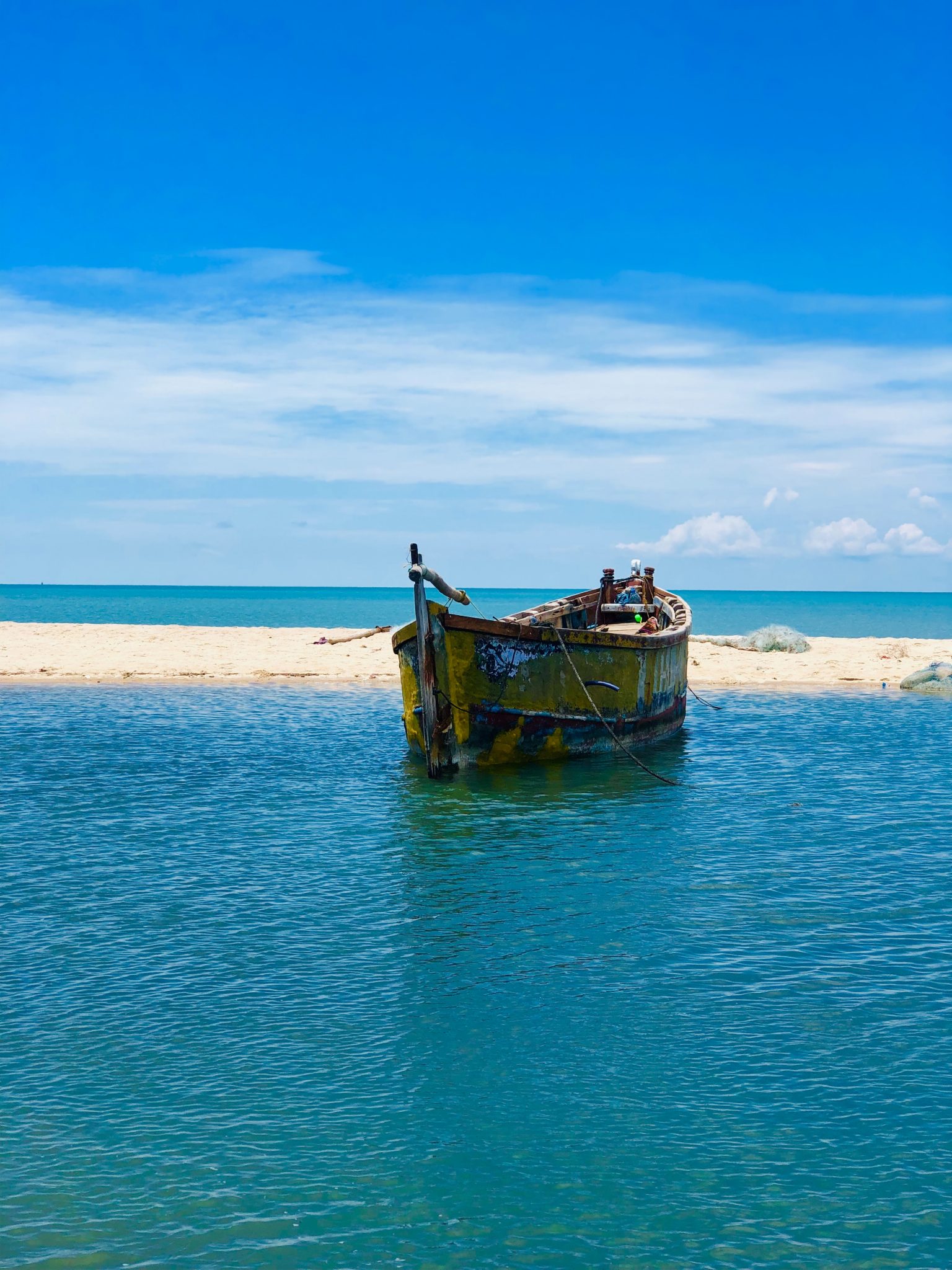
Day 8: Madurai – Thekkady
After breakfast, enjoy a city tour of Madurai.
Sightseeing in the city will start by visiting the flower market, Thirumalai Nayakkar Mahal. Thirumalai Nayak Palace is a 17th-century palace erected in 1636 AD by King Thirumalai Nayak, a king of Madurai’s Nayaka dynasty who ruled Madurai from 1623–59. This palace is a classic fusion of Dravidian, Islamic styles. The building, which can be seen today, was the main palace where the king lived. The original palace complex was four times bigger than the present structure. In its heyday, Tirumalai Nayak Palace at Madurai was considered to be one of the wonders of the south.
You will next visit Gandhi Museum (remains closed on Fridays).
Afterwards, you will be driving to Thekkady (145 kms/4.5 hours drive). On arrival in Periyar, you will be met and assisted with check-in at your hotel.
Periyar Wildlife Sanctuary is a must-see for all visitors to Kerala. The Periyar Lake lying at the heart of the sanctuary provides one with a unique opportunity to view wild animals in their natural surroundings. The Asiatic wild elephant, majestic gaur, deer, wild boar, tortoise, flying squirrels and the distinctive Nilgiri langur are often spotted along the lake as also water birds. Sprawled over an area of 777 Sq. km. Periyar is one of the 27 tiger reserves in India. This zealously guarded and efficiently managed reserve is a repository of rare, endemic and endangered flora and fauna.
Overnight at the hotel
Day 9: Thekkady
After breakfast, drive out to the hills at the edge of the Periyar National Park, where many spice gardens are located. Dwelling at a height of 800 to 1000 meters, these dense forests preserve some of the world’s most exotic flavours, amidst bright green palm groves and patches where mangoes, nutmeg and cardamom flourish, interspersed with coffee plantations and clusters of black pepper plants grown at home by the villagers residing by the road. You will see stretches of cardamom, black pepper, cinnamon and clove vegetation dotting the landscape.
Kerala’s spices are famous for their distinct taste and flavour. Mostly used as condiments that flavour food, some spices are used for seasoning and garnishing purposes, others are used for medicinal and cosmetic purposes. Some of the popular spices of Kerala that envelop the green Kerala hills in an everlasting fragrant cloud are ginger, bay leaves, curry leaves, turmeric, thyme, oregano, mint, rosemary, basil and sage.
After the spice plantation, you will be driven back to the hotel.
Overnight at the hotel
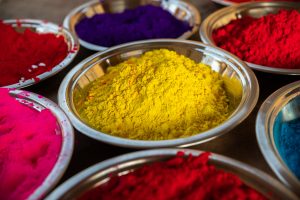
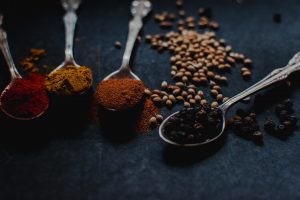
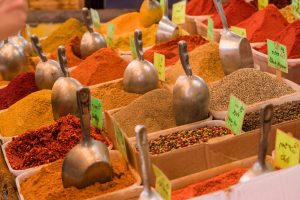
Day 10: Thekkady – Kumarakom
After breakfast, drive to Kumarakom (5 hours drive). On arrival in Kumarakom, you will be met and assisted with check-in at your hotel
Kumarakom is a beautiful backwater destination, located on the picturesque Vembanad Lake. The blue backwaters and the surface of Vembanad Lake reflect the azure sky. The amazing shades of green of the vegetation (including mangroves, coconut palms, and paddy fields) cover the verdant countryside. Channels and waterways wind their way through this green paradise. Water lilies and lotuses bloom in the water and birds from the bird sanctuary on Vembanad Lake call as they fly across the clear tropical sky.
The village of Kumarakom is a cluster of little islands on the Vembanad Lake and is part of the Kuttanad region. Here you can see how people have adapted their lives to the waterways and do everything on these winding canals. The rest of the day is spent at your leisure to enjoy the hotel’s facilities.
Overnight at the hotel
Day 11: Kumarakom
After breakfast, enjoy a full-day houseboat experience; popularly known as Kettuvallams, these stitched boats provide the best way to experience the colourful backwaters of Kerala. The wood commonly used to make Kettuvallams is ‘Anhili’, which is found in abundance in central Travancore area. Large planks are tied together using handmade coir ropes and beaten coconut fibres. This gives the Kettuvallams enough strength to withstand heavy waves in the sea.
Enjoy lunch on the houseboat.
Overnight at the hotel
Day 12: Kumarakom – Cochin
After breakfast at the hotel drive to Cochin.
Kochi (colonial name Cochin) is a vibrant city situated on the south-west coast of the Indian peninsula. Its strategic importance over the centuries is underlined by the sobriquet “Queen of the Arabian Sea”. Informally, Cochin is also referred to as the “Gateway to Kerala”.
Upon arrival at Kochi proceed to your city tour. Visit the Dutch Palace (closed on Friday) also known as Mattancherry Palace. It was built by the Portuguese and presented to the Raja of Kochi in 1555 AD. It acquired the present name after 1663 when the Dutch carried out extensions and repairs in the palace. Its interiors are decorated with murals from the Ramayana and there are some lively displays of royal costumes and palanquins. Then, visit the Jewish Synagogue (closed on Friday & Saturday) built-in 1568 AD. The Great Scrolls of the Old Testament are of interest here [closed on Friday & Saturdays]. You will also visit St. Francis Church in Fort Kochi. This Protestant church was originally built by the Portuguese in 1510 AD and is believed to be the oldest church built by Europeans in India. It is here the remains of the inveterate traveller, Vasco-da-Gama, were initially buried. Santa Cruz Basilica Church is also worth visiting. Some beautiful paintings can be seen here, followed by the Spice Market.
In the afternoon, witness the Chinese fishing net methodology of catching fish. The Chinese fishing nets line the sea-front and exhibit a mechanical method of catching fish. Watch the local fisherman utilising this method on your way while back to the hotel. In the evening, enjoy an hour of the famous Kathakali dance performance. Kathakali is the classical dance-drama of Kerala, South India, which dates from the 17th century and is rooted in Hindu mythology. Kathakali is a unique combination of literature, music, painting, acting and dance.
Overnight at the hotel
Day 13: Cochin – Departure
Breakfast at the hotel.
Today you will be transferred to the airport for your flight back home.
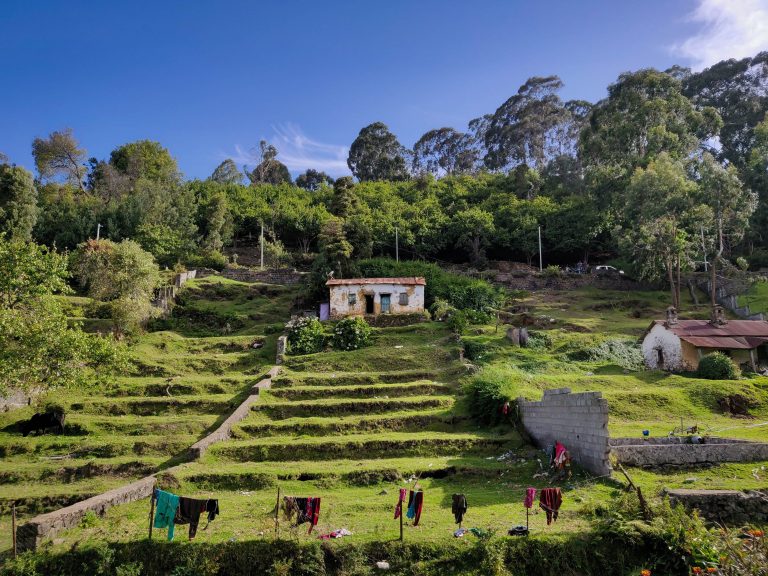
All of our featured itineraries can be customised bespoke to your preferences. Contact us to find out more, or explore our fantastic array of other Culture & History itineraries here.
![Tailor-made Holidays [logo]](https://www.myworldinstyle.com/wp-content/themes/esyntaxis/images/my-world-in-style-logo.svg)
![[icon]](https://www.myworldinstyle.com/wp-content/uploads/2019/08/1-1-150x150.jpg)
![[icon]](https://www.myworldinstyle.com/wp-content/uploads/2019/08/2-3-150x150.jpg)
![[icon]](https://www.myworldinstyle.com/wp-content/uploads/2019/08/3-2-150x150.jpg)
![[icon]](https://www.myworldinstyle.com/wp-content/uploads/2019/08/7-150x150.jpg)
